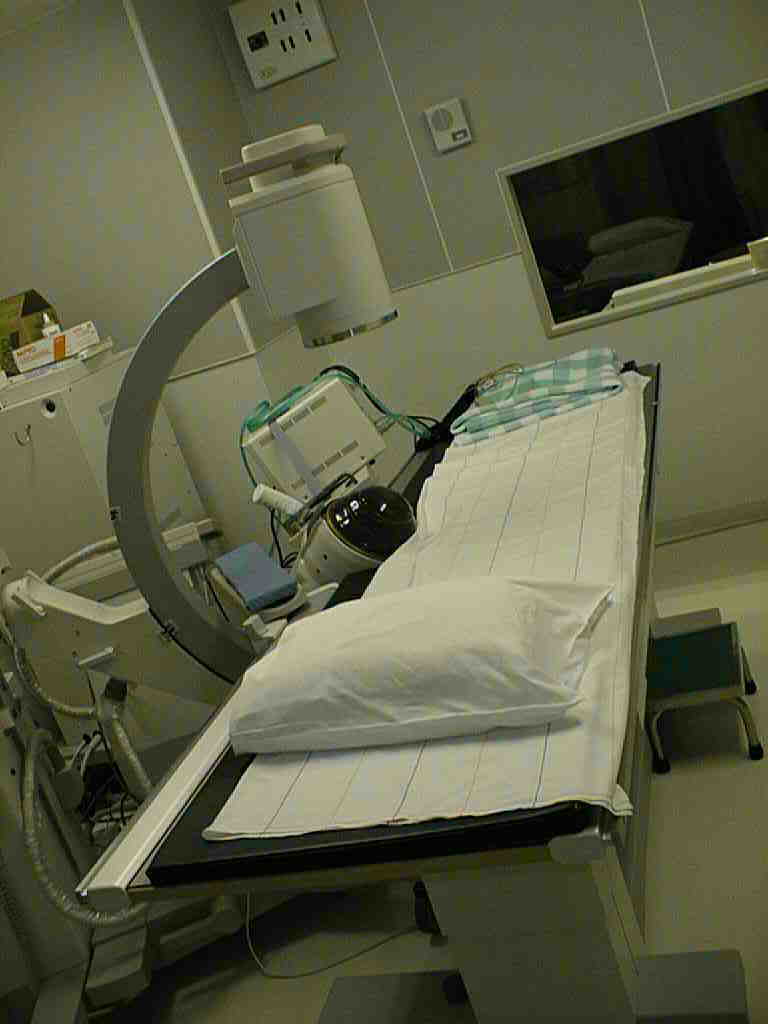Kidney stone surgery
Jump to navigation
Jump to search
|
Kidney stone Microchapters |
|
Diagnosis |
|---|
|
Treatment |
|
Case Studies |
|
Kidney stone surgery On the Web |
|
American Roentgen Ray Society Images of Kidney stone surgery |
Editor-In-Chief: C. Michael Gibson, M.S., M.D. [1]; Associate Editor(s)-in-Chief: Amandeep Singh M.D.[2]
Overview
The mainstay of treatment for nephrolithiasis is medical therapy. Surgery is usually reserved for patients with either persistent and severe pain, renal failure, kidney infection and when stone fails to pass or move after 30 days. The surgeries which are being used currently include extracorporeal shockwave lithotripsy, ureteroscopy and percutaneous nephrolithotomy.
Indications
- The mainstay of treatment for nephrolithiasis is medical therapy. Surgery is usually reserved for patients with either:
- Persistent and severe pain
- Renal failure
- Kidney infection.
- Stone fails to pass or move after 30 days.
Surgery
The following surgeries are used for the management of nephrolithiasis:[1][2][3][4][5][6][7]
Extracorporeal Shock wave Lithotripsy (ESWL)

- ESWL is the minimally invasive surgical option.
- Shock waves produced from various sources like electromagnetic, electrohydraulic, cause stone fragmentation directly by producing mechanical stresses or indirectly by the collapse of cavitation bubbles.
- It focuses all energy onto the calculus to break it.
- The fragmenst pass in the urine.
- There are some side effects and limitations of ESWL:
- Bleeding
- Pain during passage of stone fragments
- Diabetes mellitus and Hypertension development
- Acute kidney injury
- Stone > 1.5 cm in diameter is difficult to treat with ESWL
Ureteroscope
- An ureteroscope is a rigid, semi-rigid, or flexible endoscope that helps in retrograde visualization of the collecting system .
- The ureteroscope has a working channel that allows the introduction of a variety of instruments for stone fragmentation and its removal.
- Its an invasive procedure.
- It is used when ESWL is failed and cannot be used:
- when complex or lower pole renal calculi are present14;
- Pregnancy, coagulopathy, or morbid obesity preclude lithotripsy.
- The disadvanatge of ureteroscopy is the discomfort in some patients caused by ureteral stent.
Ureteral (Double-J) Stents

- One modern medical technique uses a ureteral stent (a small tube between the bladder and the inside of the kidney) to provide immediate relief of a blocked kidney.
- This is especially useful in saving a failing kidney due to swelling and infection from the stone.
- Ureteral stents vary in length and width but most have the same shape usually called a "double-J or double pigtail".
- They are designed to allow urine to drain around any stone or obstruction.
- They can be retained for some length of time as infections recede and as stones are dissolved or fragmented with ESWL or other treatment.
- The stents will gently dilate or stretch the ureters which can facilitate instrumentation and they will also provide a clear landmark to help surgeons see the stones on x-ray.
- Most stents can be removed easily during a final office visit.
- Discomfort levels from stents typically range from minimal associated pain to moderate discomfort.
Percutaneous nephrolithotomy(PCNL)
- PCNL is used when the stones are large, multiple and complex.
- Although most invasive of three, but it has more safety and efficacy.
- Retrograde intrarenal and percutaneous endoscopic surgery for nephrolithiasis have significantly enhanced the indications of endourology.
- Stones are fragmented by laser or pneumatic lithotripter when the nephroscope has been inserted through the channel created.
- The size of channel varies and are being used as minimally invasive technique.
References
- ↑ Miller NL, Lingeman JE (March 2007). "Management of kidney stones". BMJ. 334 (7591): 468–72. doi:10.1136/bmj.39113.480185.80. PMC 1808123. PMID 17332586.
- ↑ Fankhauser CD, Kranzbühler B, Poyet C, Hermanns T, Sulser T, Steurer J (May 2015). "Long-term Adverse Effects of Extracorporeal Shock-wave Lithotripsy for Nephrolithiasis and Ureterolithiasis: A Systematic Review". Urology. 85 (5): 991–1006. doi:10.1016/j.urology.2014.12.014. PMID 25917723.
- ↑ Rassweiler J, Rassweiler MC, Klein J (January 2016). "New technology in ureteroscopy and percutaneous nephrolithotomy". Curr Opin Urol. 26 (1): 95–106. doi:10.1097/MOU.0000000000000240. PMID 26626887.
- ↑ Srisubat A, Potisat S, Lojanapiwat B, Setthawong V, Laopaiboon M (November 2014). "Extracorporeal shock wave lithotripsy (ESWL) versus percutaneous nephrolithotomy (PCNL) or retrograde intrarenal surgery (RIRS) for kidney stones". Cochrane Database Syst Rev (11): CD007044. doi:10.1002/14651858.CD007044.pub3. PMID 25418417.
- ↑ Srisubat A, Potisat S, Lojanapiwat B, Setthawong V, Laopaiboon M (October 2009). "Extracorporeal shock wave lithotripsy (ESWL) versus percutaneous nephrolithotomy (PCNL) or retrograde intrarenal surgery (RIRS) for kidney stones". Cochrane Database Syst Rev (4): CD007044. doi:10.1002/14651858.CD007044.pub2. PMID 19821393.
- ↑ Krambeck AE, Gettman MT, Rohlinger AL, Lohse CM, Patterson DE, Segura JW (2006). "Diabetes mellitus and hypertension associated with shock wave lithotripsy of renal and proximal ureteral stones at 19 years of followup". J Urol. 175 (5): 1742–7. PMID 16600747.
- ↑ Ed Edelson (2006). "Kidney Stone Shock Wave Treatment Boosts Diabetes, Hypertension Risk - Study suggests link, but doctors say it's too early to abandon this therapy". HealthFinder. National Health Information Center.
- ↑ By Dr. Dirk Viehoever - Benutzer:Dirkes1.Dirkes1 at German Wikipedia - Self-photographed (Original text: selber aufgenommen) https://commons.wikimedia.org/w/index.php?curid=20607127
- ↑ By Steven Fruitsmaak - Own work, CC BY-SA 3.0, https://commons.wikimedia.org/w/index.php?curid=4120270